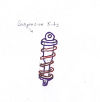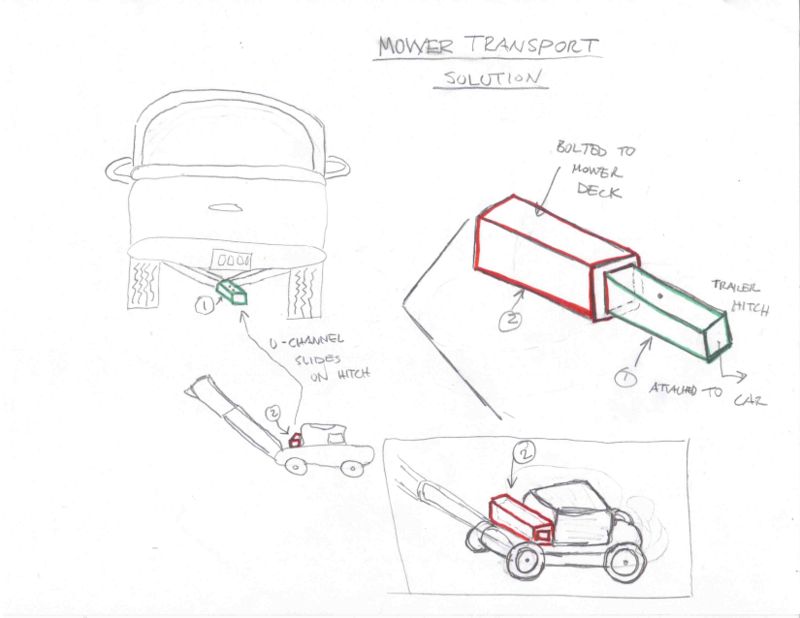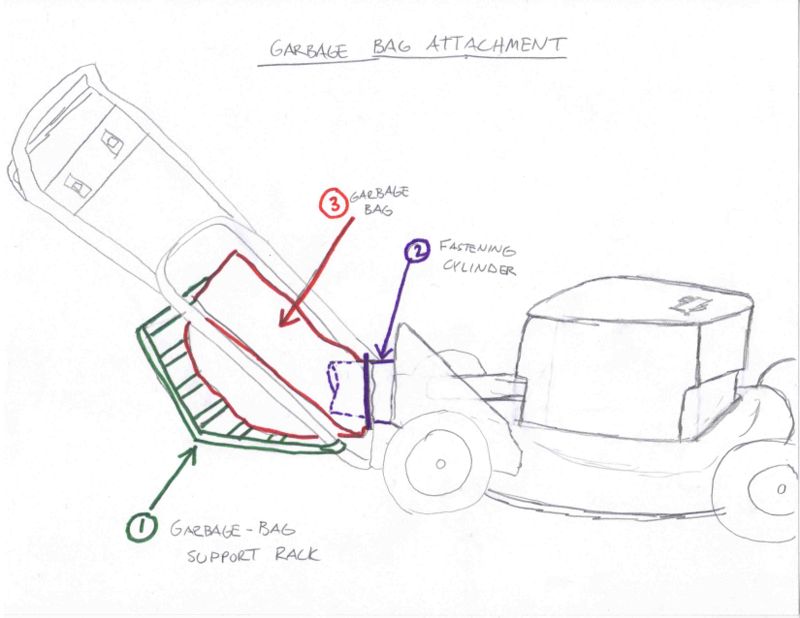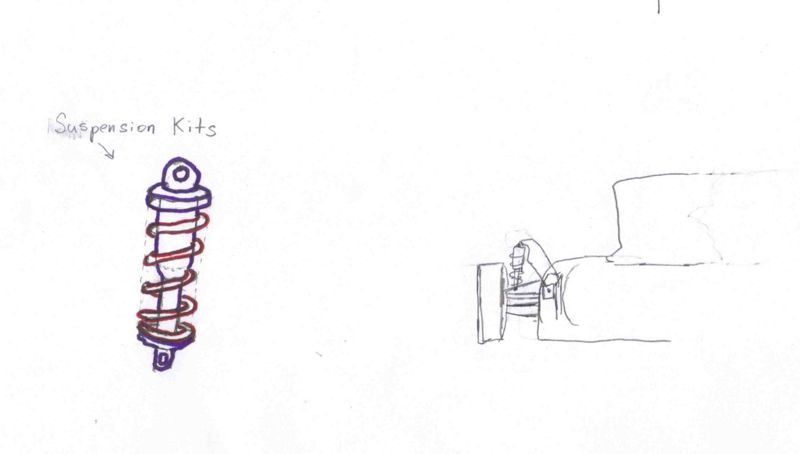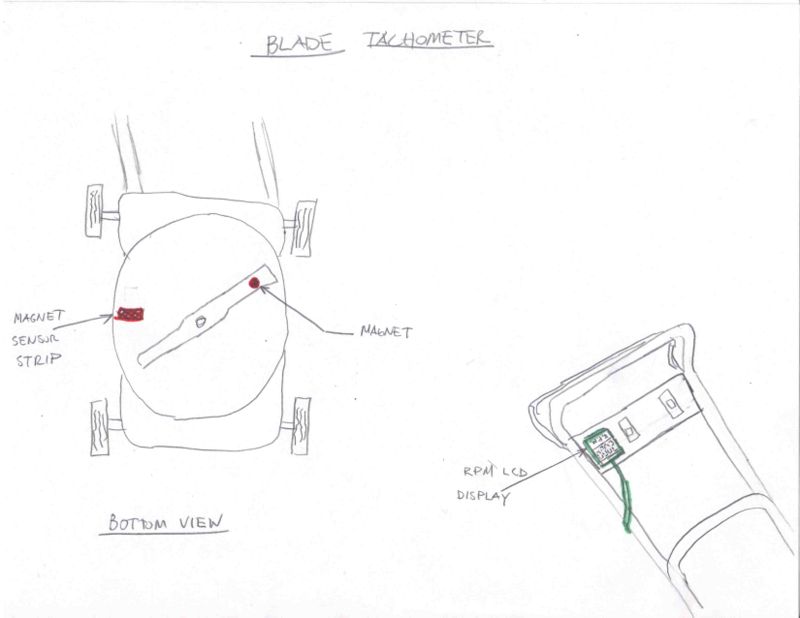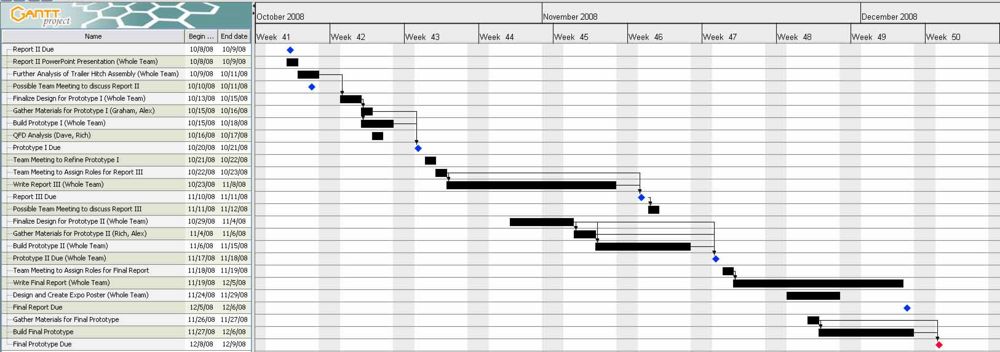Self propelled lawnmower redesign
From DDL Wiki
Contents |
Executive Summary
Customer and Stakeholder
Graham
Research
In our attempts to find areas for innovation we sought out different sources to diagnose problems with the current lawnmower design. Our first test involved the four members of the group. Each of us was given the opportunity to use the mower in a variety of common situations. These situations included mowing high grass, short grass, uphill, downhill, etc. Instead of immediately discussing our opinions and observations we wrote them down so that we would each have an unbiased opinion. We then compared the results and diagnosed the crucial problems. We discussed possible solutions to these issues and compiled a list. The key ideas were isolated and these became the ones that we will focus on. The next step in our market research was to go out and ask people who deal with lawnmowers everyday what problems they commonly saw. We went to a local lawnmower service and repair center to speak to experts about the project. We asked them what aspects of the lawnmowers they commonly complain about and their suggestions for improvements. They seemed to find the same problems as we did in our initial test and had very similar solutions. We showed them our ideas for innovation and asked for their honest opinions on feasibility. They liked some of our ideas a lot while others they said would probably not work or they had seen similar solutions that didn’t work. After performing this market research we were able to narrow it down to four design concepts. These concepts are all a direct response to complaints of the stakeholders and seek to resolve key issues with the lawnmower. They all seem to be feasible and within the scope of this course and our resources.
Brainstorming
The following is a list of initial ideas for innovation on the lawnmower. This was a general brainstorm and some of the ideas tend to be more abstract. Even so, they were able to hone our thought process such that we would come up with more feasible solutions. 1. Feedback system for blade 2. Battery powered 3. Cutting strings instead of blades 4. Turning front wheels 5. Rising casters for easier maneuvering 6. Leaf catcher/shredder 7. Grass incinerator 8. Grass watering device 9. Grass fertilizing device 10. More user-friendly/ergonomic push handle 11. Automatic throttle/choke control 12. System check light panel (similar to car dashboard) 13. Electric ignition 14. iPod dock 15. Cup holder 16. Brakes on wheels for steep hill cutting 17. Hill assist for steep hills 18. Stereo system 19. Run timer (to help schedule maintenance) 20. Baffled muffler (noise reduction) 21. Grass compactor for increased storage of cut grass 22. Side chipper/shredder 23. Hybrid engine system 24. Diamond tipped blade 25. Four smaller blades instead of one big one 26. Snap together parts for easy transportation 27. Integrated weed-whacker (clips onto side) 28. Mounting arm to attach directly to trailer/hitch 29. Line making system (check how straight cut is and keep in line) 30. Rotating side discharge chute (similar to snow blower) 31. Cell phone alert system 32. Headlights for night use 33. Fan, cooling system 34. Umbrella (sun/rain) 35. Compartment to store items (tools) 36. Remote controlled 37. Key ignition 38. Key code for safety 39. Cooler (drinks) 40. Cable locking system 41. Tracks like on snow-mobile for traction 42. Ball shaped steering design (roll any direction) 43. Leaf blower system 44. Riding skids 45. GPS (route storage) 46. Self cleaning (washing system) 47. Bike seat (riding) 48. Reverse drive 49. Hovering deck 50. Automatic blade sharpener 51. Timer ($ to charge client) 52. Multiple angled handle to ease pushing 53. Throttle control similar to motorcycle (or drive control) 54. Extra large fuel capacity (in reservoir) 55. Fuel level gauge 56. Turn screw system 57. Handle suspension 58. Blade tachometer/odometer 59. Front suspension 60. Make all wheels adjust at the same time 61. Integrated fertilizer spreader 62. Air suspension for wheels 63. Bagging system redesign (garbage bags) 64. Introduce compressor to belt that stores energy to lift ride height 65. Introduce system connecting wheel axles to frame that allow raising/lowering 66. Adjust blade height instead of deck height 67. Replace cables with wireless
Design Concepts
After our brainstorming process we began to narrow down our ideas. We weeded out some of the impractical and unfeasible ideas. We then picked some of our better solutions and arranged them in a chart based on the problem they helped resolve.
| Vibrations and User Comfort | Bagging System | Long Grass / Stalling | Maintenance and Cleaning | Transportation and Storage | Safety |
|---|---|---|---|---|---|
| Pneumatic Tires | Garbage Bag Attachment | Engine Tachometer | Self Cleaning Deck | Mower Hitch Attachment | Key Ignition |
| Front and Rear Suspension | Grass Compactor | Blade Feedback Control | Self Sharpening Blades | Snap-together parts that can be easily disassembled | Push-Button Starting |
| Rising/Retracting Turning Castor Wheels | Rotating Discharge Chute | Low R.P.M. Warning Light | System Run Timer | Foreign Object Recognition | |
| Air Suspension | Carbide Blade Tips | Dashboard with System Check Lights | Brakes/ Wheel Locking Mechanism |



